A number of people over the years have done impersonations of the inimitable Hans Halberstadt and they range wide in both style and substance. Charlie Selberg knew Hans well and would often quote him during fencing lectures or footwork drills. His version of Hans never attempted to mimic Hans’ vocal qualities, but rather conveyed what was usually a punchline in Charlie’s own voice, while adding a heavy German accent to deliver the Halberstadt-ism. An oft-repeated one was, “Jah, I have coached for 50 years and the only one who gets better is ME!” John McDougall, too, has passed on wisdom from Hans, and, like Charlie, uses his own voice in quoting Hans without an attempt at mimicry. Then there was two-weapon National Champion Sewall “Skip” Shurtz, who took a different approach. He grew up as a child actor in Hollywood, scrambling from one audition to another, so his version of Hans was much more an attempt to convey tone and timbre in addition to the remembered – and heavily accented – words. He would drop his head, jaw resting on chest, and his voice would deepen to a gravely growl. “Sewall,” quoth Skip. “Today you will join me for lunch!” That was his interpretation of Hans. Much less common are impersonations of the voice of Helene Mayer, no doubt due to her passing so long ago now. Few remain that would be able to recall her cadence or tone. Add to that the current trend away from mimicking the regional accent of another person, a staple feature of the cartoons and movies of my childhood, and you are likely to hear much less of this kind of thing going forward.
However, now, thanks to an astounding recent acquisition, we need no longer wonder what Hans or Helene sounded like. Looking for available online resources reveals zero examples of either of them in any media with a soundtrack that includes their voices. Checking in with online film library sleuth John Trojanowski, who has been doing a masterful job of finding and posting historic film clips of fencers, confirmed the results of my own failed attempts to run something to ground. I thought Helene Mayer, at least, would have cropped up in some newsreel footage with an interview. So far, no luck.
This clip from the 1936 Olympics is representative of what’s out there in newsreel land for Helene Mayer. Confusion abounds in this particular clip. The first two fencers we see are Mayer and Ilona Elek of Hungary, the Gold medalist in ’36, as they shake hands. Elek, left handed, comes on guard with another lefty, then we cut to Ellen Preis of Austria saluting and putting on her mask, and that’s followed immediately by Elek fencing against the unknown lefty. Mayer and Preis, the Silver and Bronze 1936 medalists respectively, were both right handed. The clip finishes off with Elek and Mayer. Throughout, we hear the clashing of blades that have been very poorly interpreted by an over-excited foley artist. And no talking. Dammit.
Hans Halberstadt and Helene Mayer had a long connection. Twenty five years her senior, Hans was an established German fencer of championship calibre when the young Helene Mayer began training at the Fechtclub Offenbach under Hans’ coach, Arturo Gazzera. Both were named to the 1928 Olympic team when Germany was again allowed to participate after WW1. Mayer famously won Individual Gold in Women’s Foil as an 18 year old, while Hans competed in the Individual Epee and on the Epee and Sabre teams. Both, too, had Jewish heritage that impacted their lives in the Germany of the 1930s. Helene, once a media darling with the nickname ‘The Blonde He’, became a pariah in Germany even as she resided in the US from 1932 on. Hans’ situation was worse. Arrested by the Gestapo, he spent a brief time in a concentration camp until somehow securing his release, then trekking across Europe in 1939 to Rotterdam and boarding a ship for the US. When these two were reunited upon Hans’ arrival in San Francisco in January of 1940, they were already long-established friends and clubmates.
This card, dated 1940, is from Helene Mayer to Hans Halberstadt and reads, “Many good wishes in the coming year, dear Halberstikins. Helene + Goodboy”. As my German translation team (Cole Harkness & Harriet Jernigan – thanks you two!) informs me, ‘Halberstchen’ is an affectionate diminutive of Halberstadt, hence the Anglicized tease Halberstatikins. Helene Mayer’s holiday cards, of which there are several examples in the Halberstadt scrapbooks, were formatted like this for several years and often included her dog Goodboy or her cat, Mit-Mit. She must have handed this to Hans right about the time he disembarked at the San Francisco Greyhound bus depot, since it was past the usual window of holiday card giving. Hans arrived in SF on January 25, 1940. There is a postcard of the ship Hans sailed on in the Archive collection that has Hans’ hand written notes on the back for his trip across the country. On it, he notes that he left New York by Greyhound on January 4th and arrived in Los Angeles on the 21st. Four days later, on to San Francisco. It also has his immigration visa number and a metric-to-standard conversion of his height and weight: 5’6″, 160 pounds.
One important trait shared by both Hans and Helene, which plays into the big reveal I’m saving for further down, is that they both liked to have a good time. As you might infer from the image at the top of today’s story, Hans wasn’t shy about putting on his party clothes and having a ball. That’s Hans in the top hat on the far right with the big smile. And on the far left, to whom we owe today’s featured element, is one Jack Adams. Jack, along with wife Kitty, were friends of Hans Halberstadt almost from the time of his arrival in San Francisco. That top image is from a party at the Halberstadt Fencers Club celebrating Hans’ birthday in 1944.
The invitation to Hans’ 59th birthday party, June 10th, 1944. I don’t even know what to say about the ‘bare back’ part of the invite, but apparently the circus theme was one that played out more than once for parties at Hans’ place.
The gang’s all here! I can’t identify everyone in this photo, but I can name five in a row. Standing in the back on the far right is Kitty Adams. Moving left, we have Jack Baker, Emily Romaine, Hans Halberstadt and Jack Adams. Everyone else is still a mystery at present. What isn’t a mystery is my firm belief that they are making a toast with something other than pink lemonade, whatever the invite might say.
It’s about time to mention to whom I’m indebted for the donation I’ve yet to reveal and also for a great number of identities in the photos. An earlier story here on the website got the attention of two of the children of Jack and Kitty Adams, Tom and Peggy. They both spent a great deal of time at the Halberstadt club when they were young and Tom took lessons from Hans. They were pretty familiar with a few of the faces that show up in these party photos. Of course, they were young, so adults around Hans wouldn’t have been their primary focus, not to mention neither had yet been born in 1944 when the circus party photos were taken. Still, they’ve helped me ID their father and mother in a number of photos, along with those in the crowd that they could remember.
Jack Adams poses with Emily Romaine on the right and an as-yet unidentified woman on the left.
Jack Adams represented the Halberstadt club for many years. I’ve found records of him winning medals and competing in the Pacific Coast Championships ranging from 1947 to 1956 in all three weapons. He didn’t bring in a lot of first place medals in individual competitions, but won PCC team events multiple times in multiple weapons. There is also this, which I believe is still on a shelf at the Halberstadt club, albeit with additional names on it:
A nice photo of a trophy taken after its first year of having been awarded. Jack Adams, Myron Berrick (a name I haven’t researched) and Gerald (Gerard, Jerry) Biagini. Heck, I could ask him about Berrick, couldn’t I?
How appropriate that the above trophy was awarded in 1943, what with the forthcoming item. Tom and Peggy both commented on a story here on the Archive website where a photo of their father showed up and that began an email exchange between the three of us as they assisted me in a round of ‘name the players’ in old pictures. Then Tom sent me this photo:
A Recordio record. The hand-written title stopped me in my tracks.
“Recordio”? Never heard of it, and I like old technology. This one was outside my experience. Google helped me learn that Wilcox-Gay made radios and record players before moving on to audiotape recorder/players. They shut down in 1963, but not before creating the amazing Recordio device. With it, you could literally cut a record in your living room. There were a variety of makes and models. Some of them would record from your radio through a direct input, allowing you to record your favorite shows. Fibber McGee & Molly, anyone? Mandrake the Magician? Spike Jones? You get the idea. It also had a microphone input. There were two arms for the records. One was for playback and the other was a cutting arm that would lay down the sounds directly onto blank vinyl records. Here’s what one version of it looked like:
The Recordio Radio and Vinyl Record Player/Recorder.
The photo of the record that Tom shared with me has a hand-written label that reads, “Fencing Group, Christmas Party, 1943”. And it coincides with a photo that I used in a story about the acquisition of the two original Hans Halberstadt scrapbooks for the Archive collection. The photo was from a 1943 Christmas Party that took place at the Adam’s home. And because Hans was a scrapbooker and six of his scrapbooks have survived to the present day, two in their original condition, we have this piece of ephemera from the earliest of the scrapbooks that he began upon his arrival in the United States:
One of the things Hans did when making his scrapbooks became very apparent when I received the two original books as part of a donation to the Archive from Elizabeth Carman. That was, Hans taped or glued things onto the pages in the order he got them. So, even though this party invite to the home of Mr. and Mrs. J. Yuletide Adams doesn’t name the year, everything on the surrounding pages was from 1943. Fortunately, poor as my Sherlock Holmes-ian sleuthing skills may be, I can still put 2 + 2 together.
The fun times that were had at the Adams household for the 1943 Christmas season are plain to see on the faces of the attendees, seen below.
My initial pass at identifying the people in this photo began and ended with Hans Halberstadt, sitting far left, and Helene Mayer, seated on the couch between two gentlemen. With Peggy’s help, I now know that the man by Helene on the far right is her father, Jack Adams. On the other side of Helene is Louis Lataillade, who fenced at The Olympic Club in San Francisco. The man with the glasses standing behind Louis is a family friend of Jack and Kitty’s named Carlos Bertram. Having looked up Louis Lataillade through Newspapers.com and coming across his wedding announcement, I believe the woman sitting to Louis’ right with the bright smile is his fianceé, Jane Elizabeth Twaits. They were married in June, 1944.
Not to put off the big reveal further (yet here I go), I found the following article while searching up Louis Lataillade’s personal history as told through the medium of old newspapers. He was a Stanford graduate and a chemist by trade. He shows up in the Stanford Quad yearbook in the fencing team photos of 1935 and 1936, so I know he was taught by Elwyn Bugge and was teammates with one-armed 1944 US National Foil Champion Al Snyder at both The Farm and at The Olympic Club. I also know the following:
Article from the Saturday, Feb. 17 edition of the San Francisco Examiner, circa 1940. Fencers lunging at each other simultaneously, a common occurrence, has led to many an injury over the years. Louis was lucky he wasn’t even more seriously hurt. He was back winning tournaments by April of 1941.
Ok, here’s the big reveal. Tom Adams, Jack & Kitty’s son, was going through the family’s collection of Recordio disks, which is when he found the one above with the ‘Fencing Group’ title. After sending me the picture, he mentioned that he was going to take his collection to a local place and have them transfer the recordings into a digital format. He promised to send along the results from this particular disc after he’d received them back. And that’s what he did. So let’s set the scene. It’s December 18th, 1943. Jack and Kitty Adams are throwing a holiday celebration for their friends from the fencing community including Hans Halberstadt, Helene Mayer, Louis Lataillade, his fianceé Jane, their non-fencing friend Carlos Bertram, at least 5 other adults and one youngster. To capture the event, Jack broke out his Recordio record maker, set up the microphone, and cut a record in his living room. Here is the result:
Below is a transcript, with my best guesses on who’s who and what all is said:
The vocal impression of Hans Halberstadt I had heard from Skip Shurtz made picking Hans’ voice out of this recording easy for me. He only says the one thing, but it’s Hans, without a doubt. Helene Mayer speaks a little longer and her accent comes through clearly as she stands her ground for her new employer, UC Berkeley. It’s not clear when Louis Lataillade makes the comment about Stanford that Helene reacts to. In 1943, Helene Mayer had been recently hired on at Cal to teach German to US soldiers. I don’t know if Helene took that job in addition to her work at Mills College, where she had taught German and fencing since 1933. She continued her job at Mills until she moved back to Germany in the early 1950s, but I’ve seen no record of her continuing to work at Berkeley after the war.
What an absolute treat to hear the voices of these two! I’m so indebted to Tom and Peggy for sharing this family treasure with me for the Archive. Hearing the actual voices of Hans and Helene really does bring them more fully to life inside the playground I sometimes refer to as my “mind”. So much so, that when a recent Facebook post from a former co-worker of mine popped up to show off some new technology, I immediately started messing around with it to see what results I could get. Maybe this brings Hans and Helene even more fully ‘alive’ for those of us too young to have met them in person. Take a look.
This animated version of a still photograph of Hans Halberstadt was made using the “Animate” tool on the website myheritage.com. A couple of tests got me quickly to the limit of the ‘try it for free’ mode, so I had to grab a credit card to sign up for the 14 day free trial, after which they’ll hit me with a $149 charge if I don’t cancel first. Since I just (finally) subscribed to Ancestry.com, I don’t think I’ll want to pay for two annual subscriptions to family tree websites, but I’ve got to say, this is a pretty fun little tool. It’s not entirely successful, and does not work well at all when the pre-baked animations, of which there are several versions to try, attempt to turn a face in profile where there isn’t information from the original image. Those get pretty squirrelly. The more subtle the movement, the closer it seems to come to bringing the subject to life, all from a still photo. I think it’s the eye movement.
This Helene Mayer attempt seems a bit more successful than the one of Hans above, although there is still some weirdness with her nose getting mixed up with the background. In both cases, the photos I uploaded are much wider, but the MyHeritage algorithm zooms in on just the face and does some very impressive sharpening of the facial features before running the animation process and outputting the resulting video. I’m not sure it’ll hold my interest for 12 more days, but it has been fun to play with.
Hearing the voices of Helene and Hans, courtesy of the technology available for the home market in 1943, paired with animated images made using today’s tech which is free to anyone with a device and a wifi signal, has brought these two historical figures into sharper focus for me. Somehow, there is a clarity revealed through the simple act of hearing a voice that I can now associate with the faces I see so frequently in the pictures in this Archive. It’s safe to say that Hans and Helene both figure heavily in the collection that lives on my disk drives and in the binders on my office bookshelf.
Now I can look at their pictures and – in my imagination – hear their own voices.


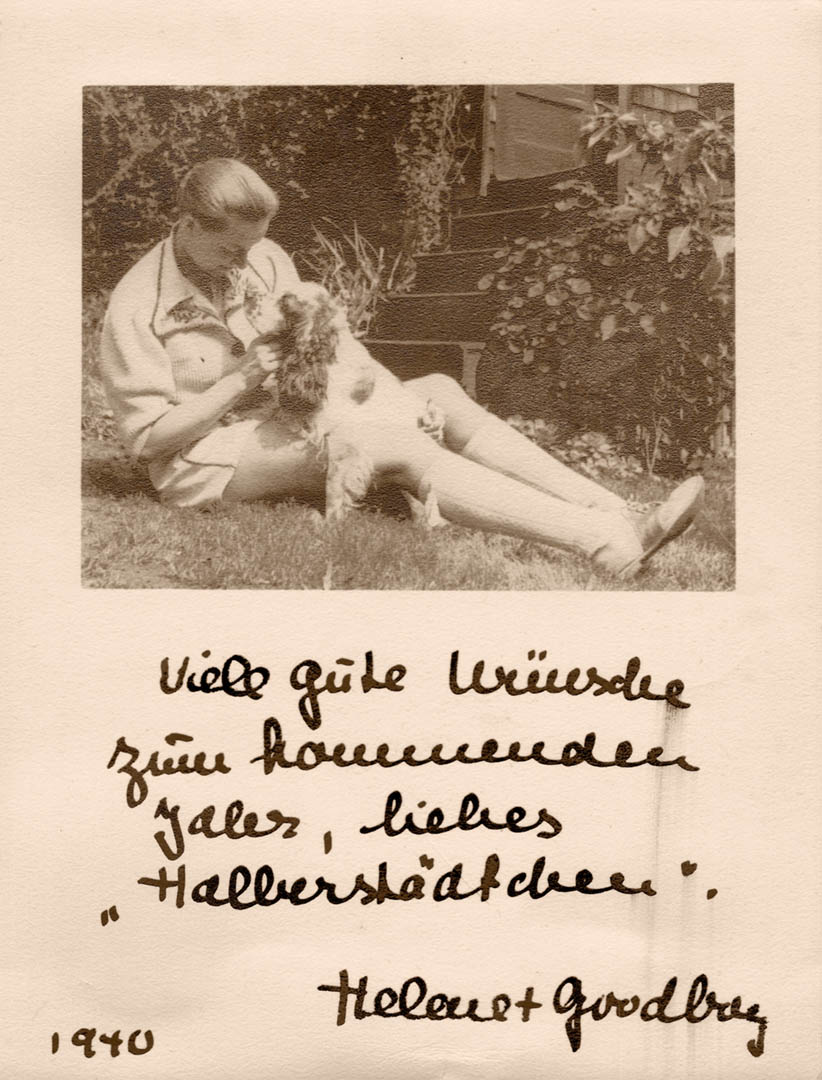
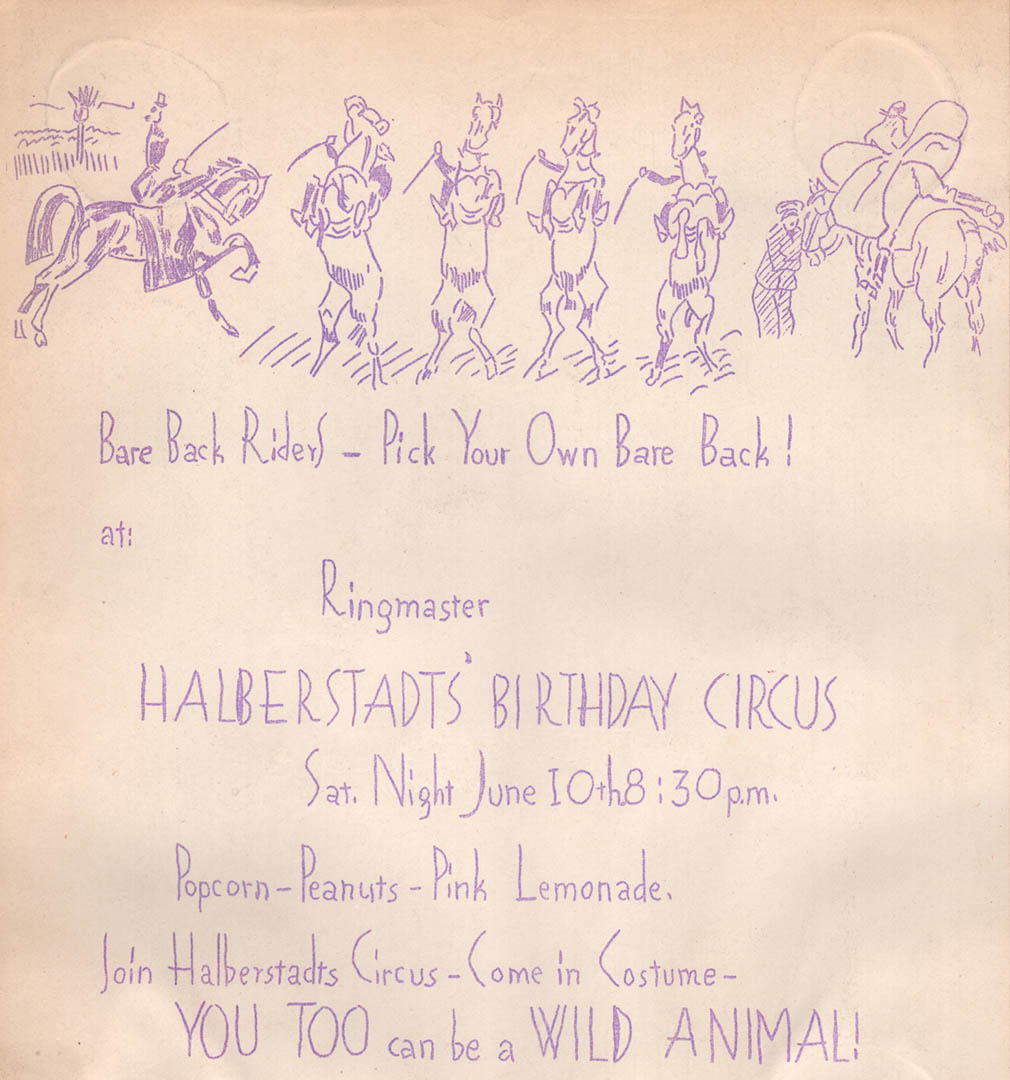
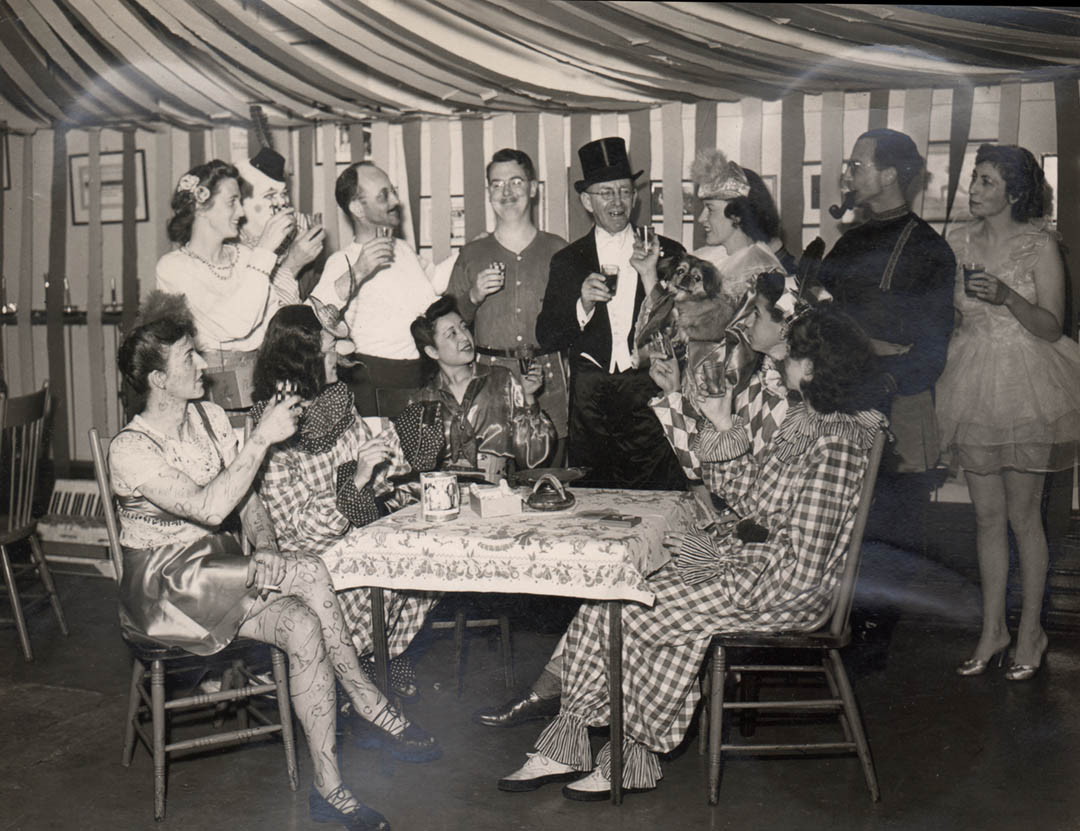

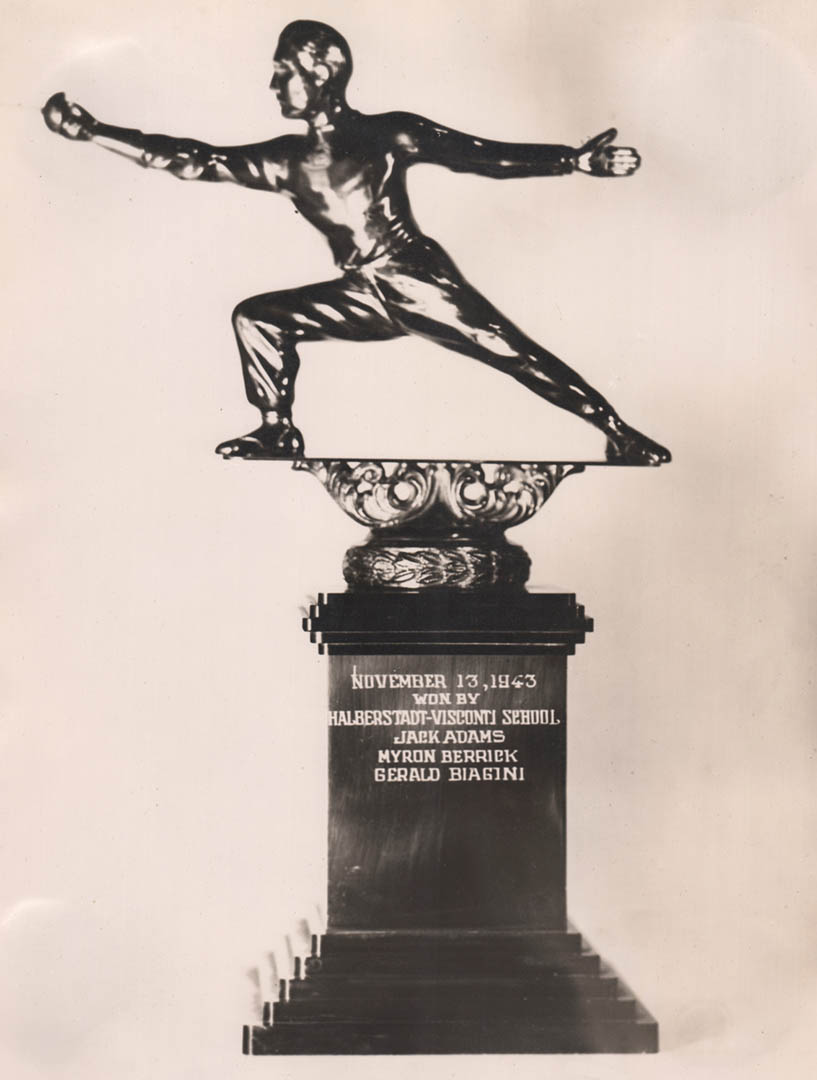

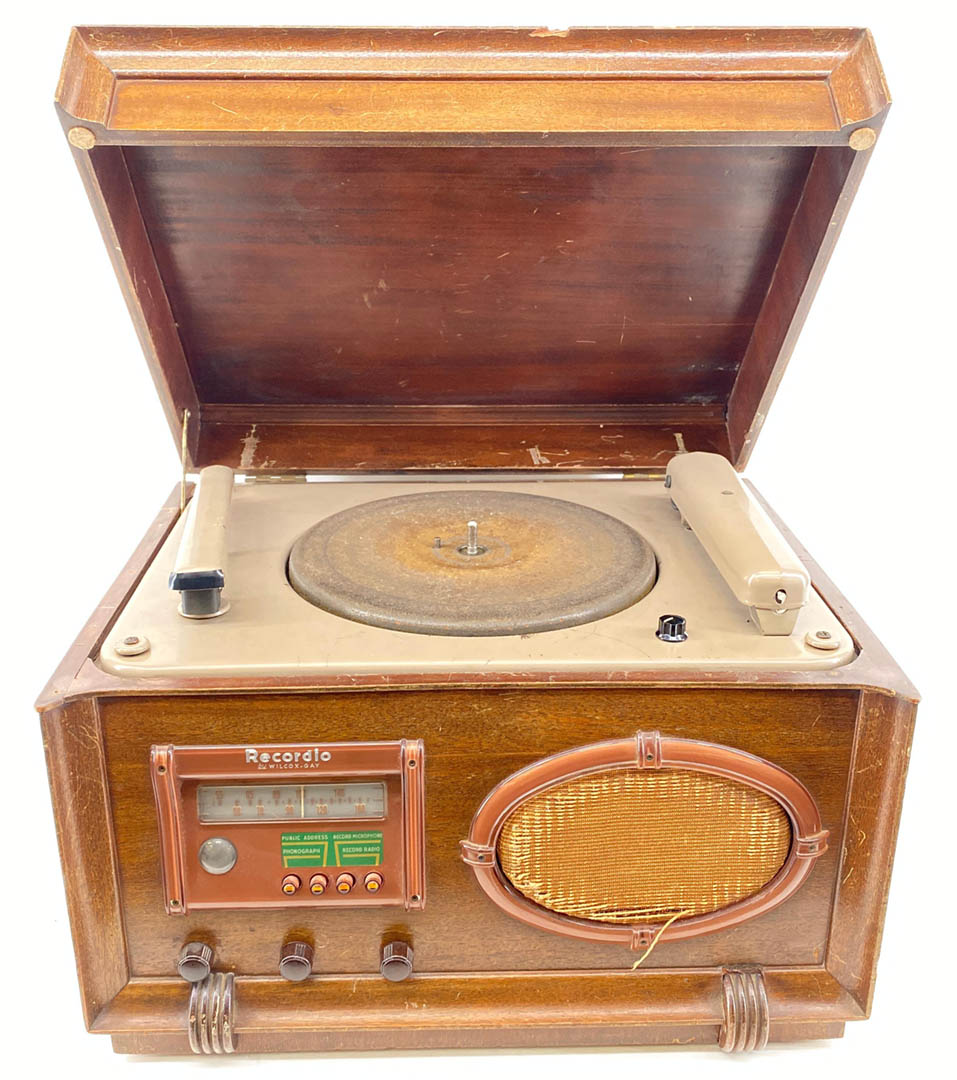
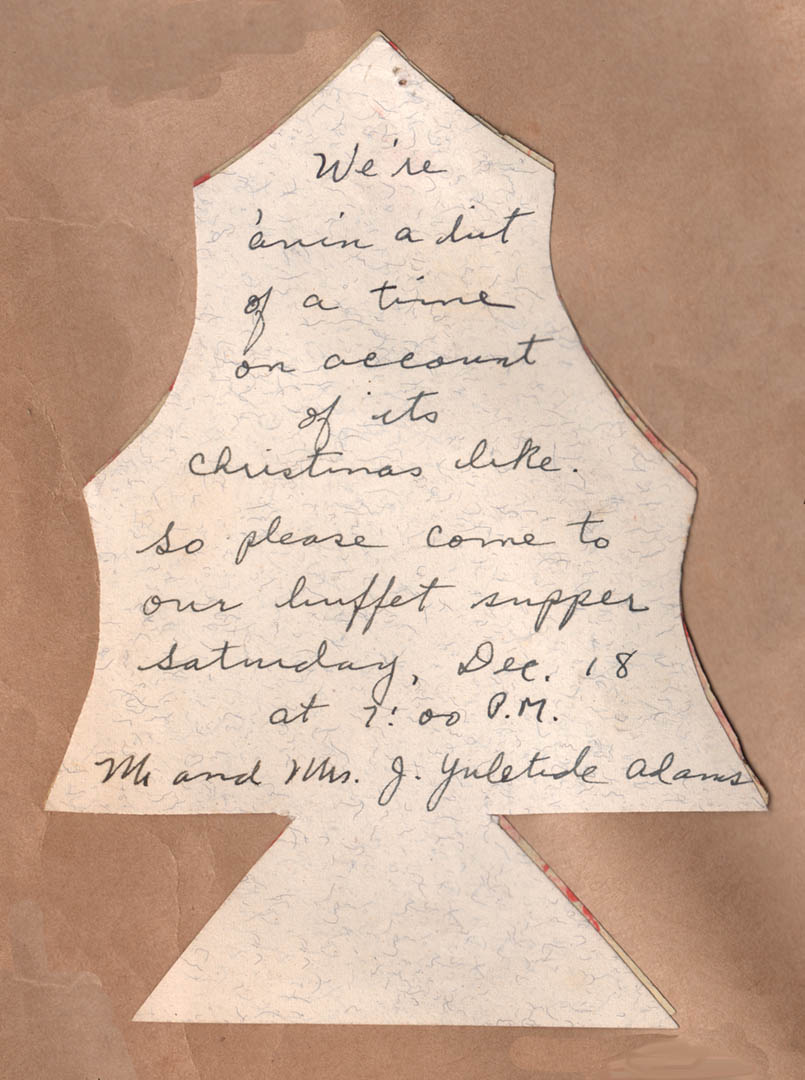
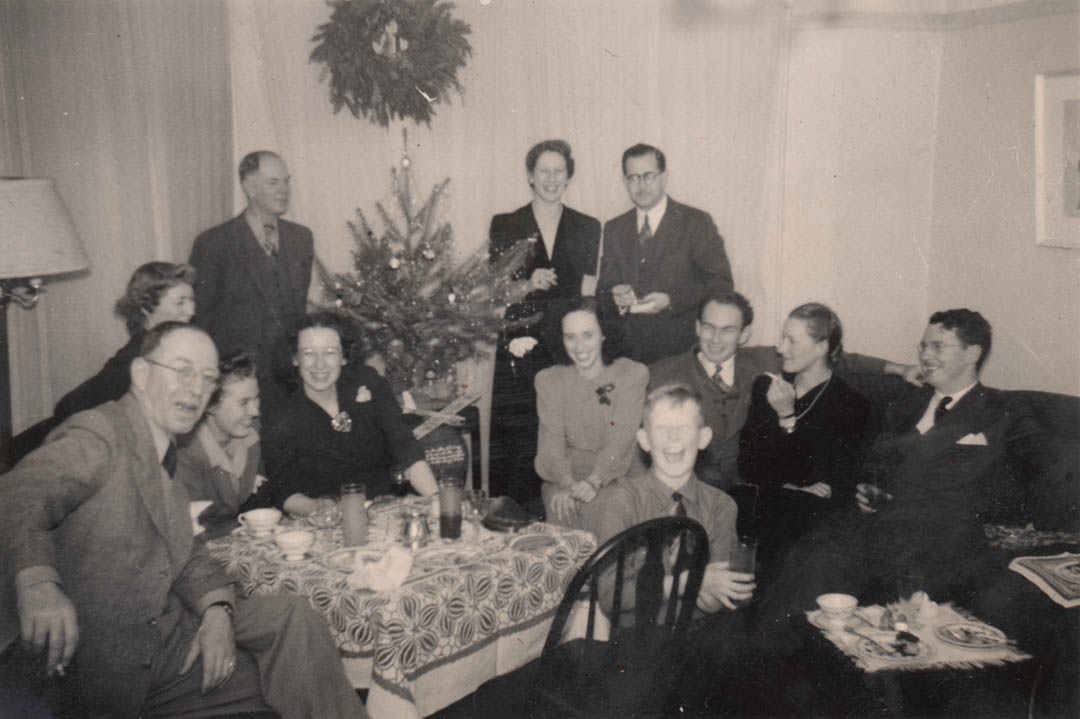
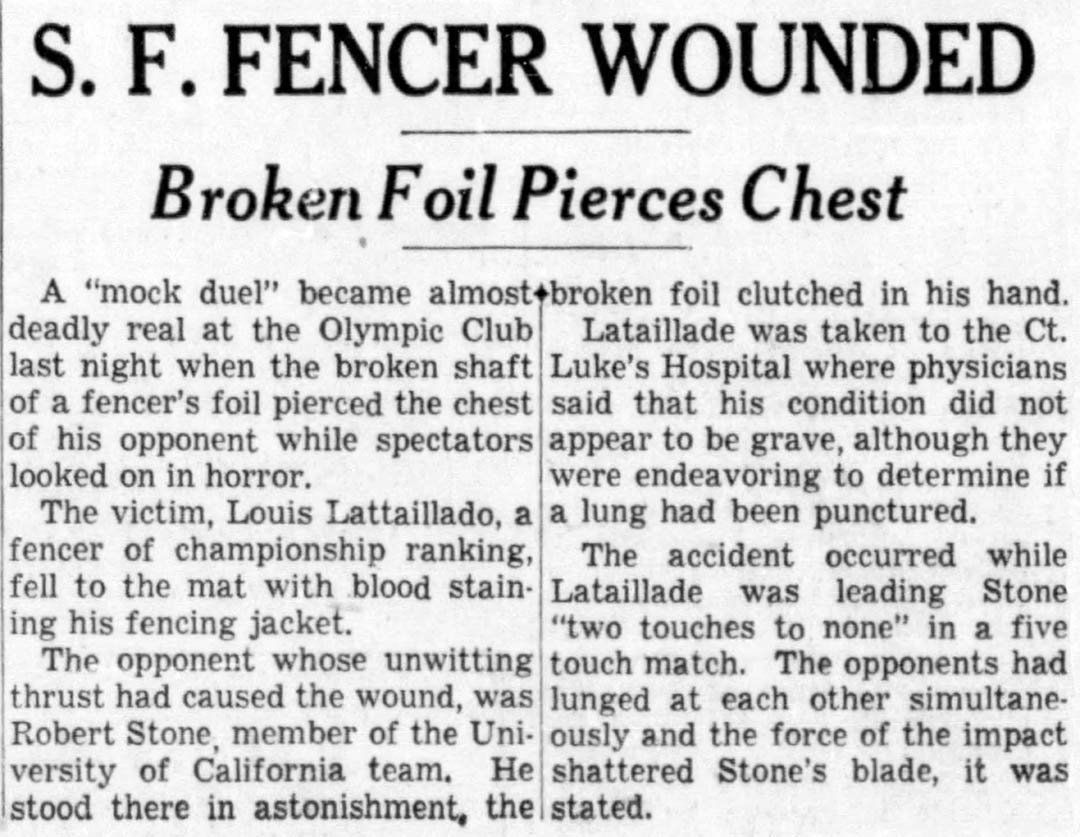
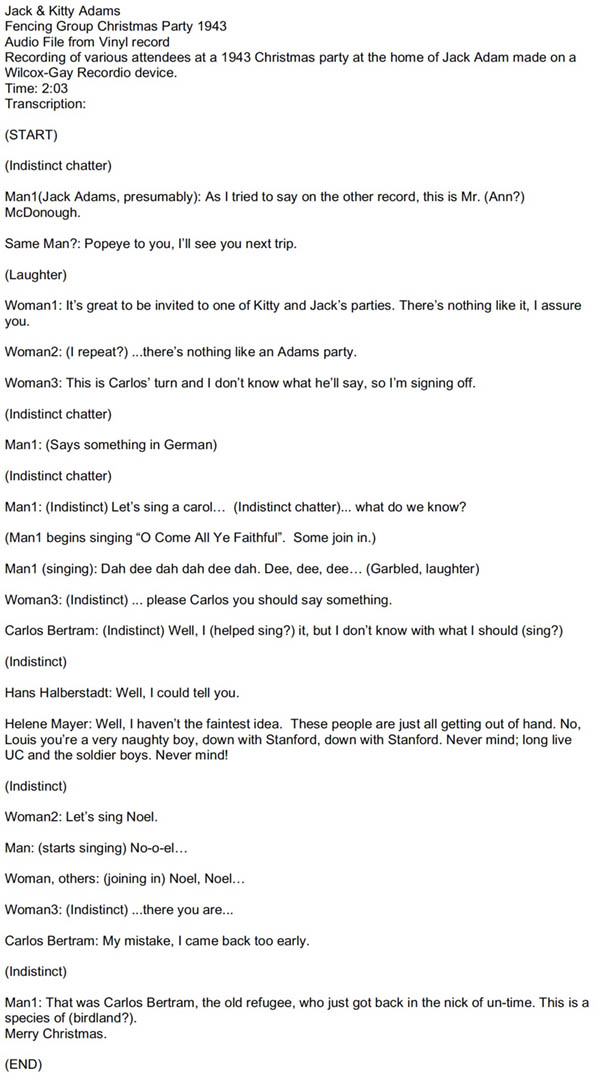
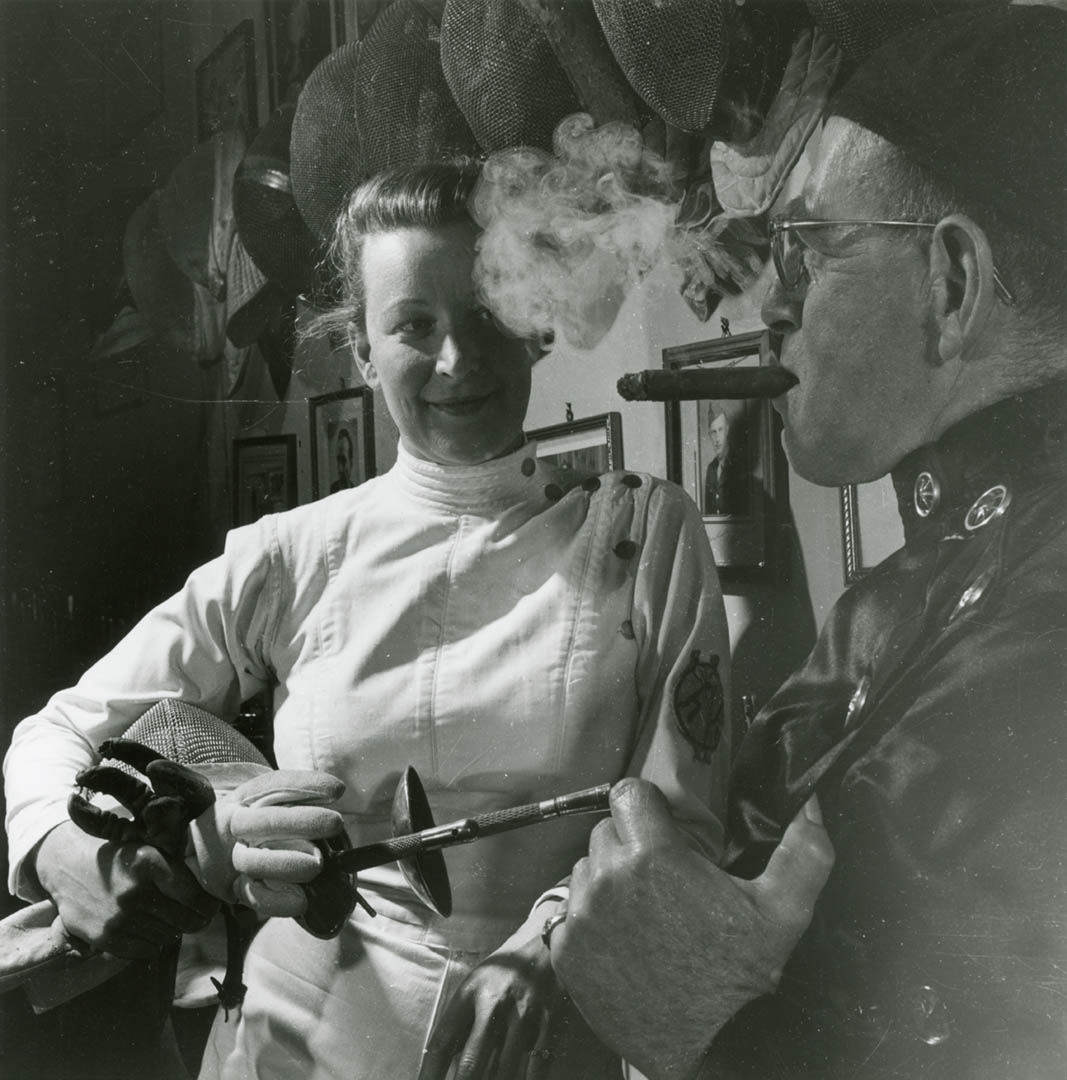
Doug,
It’s quite a wonderful write-up and research! Thank you for piecing ALL the elements of the the story together and making it so fun.
I shall never forget Hans’ voice!
Peggy Adams Dods
Thank you, Peggy!
The discoveries you make are so wonderful and captivating. Thank you again.
Thank you, Kathy! Your help has been invaluable!
Doug, After all those year’s of Selberg imitations of Hans it is truly amazing to hear the real thing. And how special to hear Helena say “DOWN WITH STANFORD”! A really amazing job… Many many thanks!
Thanks Mark! None of this would be possible without your help!
The real Hans sounds just like the impressions both Charlie and McDougall often did! I was amazed.